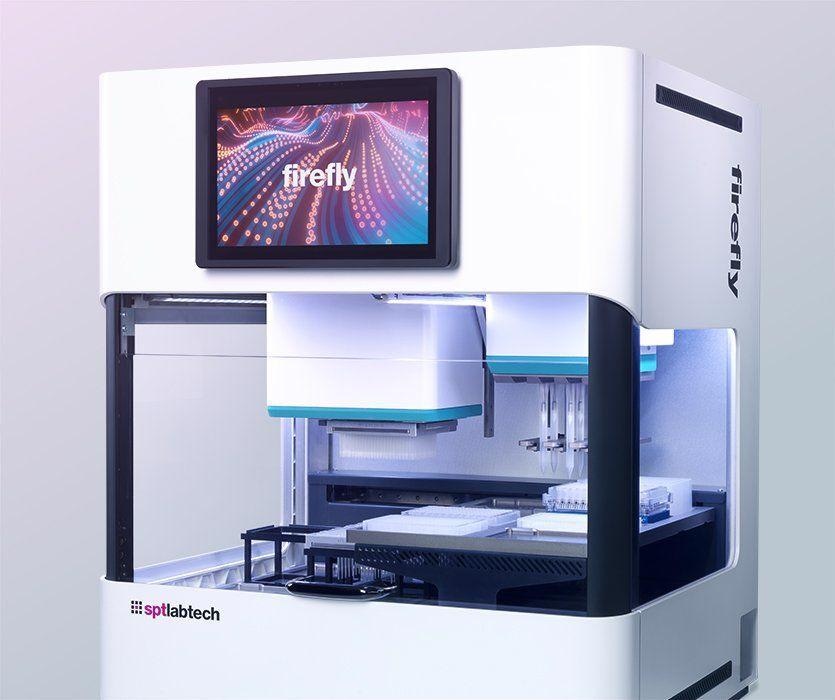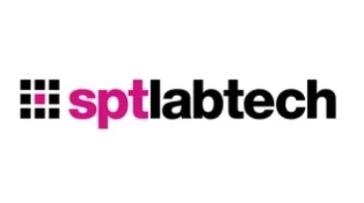In this interview, we speak to Paul Lomax from SPT Labtech about their new firefly platform and how it will help to accelerate genomics research by simplifying liquid handling workflows.
Could you introduce yourself and tell our readers about your role at SPT Labtech?
My name is Paul Lomax, and I am the product manager for genomics at SPT Labtech. What has recently been taking up the majority of my time is the development and product launch of firefly.
Please, can you tell our readers a bit more about SPT Labtech and some of your company’s missions and goals?
We try to put customers at the heart of what we do and work with customers closely to develop products. We do this by looking at their problems and using our skills in R&D and engineering to find innovative solutions that work for them, that actually make a real difference, and that ultimately accelerate research throughout the sector as a whole.
You are currently showcasing your new platform, firefly, which launches soon. Can you tell our readers more about firefly and how it works?
We have been supplying liquid handling systems for many years. We started predominantly in miniaturization, working in quite a niche. We have recently expanded into standard volume pipetting and novel dispensing technologies in our dragonfly platform.
We have seen customers using a combination of products to run a workflow, and we realized that we could bring some of the technologies that we already offer together into a platform that can do whole workflows for customers. This would be particularly useful in genomics research, where we sell a good portion of our liquid handling systems.
This led us to develop a combined liquid handler with pipetting and dispensing capabilities suited for genomics applications. We also added other accessories like incubation and shaking systems, essentially providing a complete workflow platform.
I think the biggest differentiator of our firefly platform is the dispensing technology. This technology is very low volume, non-contact, and can work with all sorts of different liquid classes without needing to change the programming. Users can just load the system and run with no need for fine tuning.
The platform is also robust and reliable, so when users combine that with pipetting systems, they have got a tremendous amount of power to optimize their research workflows.

Image Credit: SPT Labtech
Next-generation sequencing has seen considerable advancements in recent years, but there are still some challenges concerning data held in library preparation. How does the new firefly platform tackle some of these challenges?
The firefly platform addresses these challenges in a number of ways. It offers the basic functionality to do all the steps that people need to do in library preparation. The cost of sequencing is coming down, and that is driving people to do more sequencing, working with significantly larger numbers of samples. Customers still manually doing that are increasingly looking to automation, which will snowball and drive the cost down further.
We can also help customers miniaturize their applications, driving the volumes of samples down while still offering the same performance.
We have specifically made the firefly platform very approachable, and the software is very user-friendly. Even those who are not used to automation can very quickly get to grips with this system and be up and running in no time. This is important because, at the moment, many labs need their automation experts to help people run the automation. If these experts take a day off or go on holiday, things grind to a halt. The idea with firefly is that anybody in the lab can use it.
All of these capabilities mean more data, more samples, and faster research.
By providing a peer-to-peer cloud-based network, you are allowing researchers to share their protocols as well as benefit from your own validated tools. What does this mean for research and innovation?
It makes a huge difference and is something we deal with often. Many customers will contact our applications team to ask if we know anybody working with a particular protocol. The applications team is usually able to reach out to our other customers who are happy to share their protocols, but this conversation can easily take weeks to complete.
Using our peer-to-peer network, customers can decide to share their protocols and make these available in just minutes, allowing other users to access and develop this further. Everybody benefits.
The timing of this development almost feels serendipitous in some respects because we are launching on the back of a time when COVID-19 has highlighted the power of collaboration over the last two years.
We saw the speed at which companies moved and worked together with academia across the whole life sciences industry to get vaccines, testing kits, and whole PCR test programs running. It is all about collaboration, so anything that fosters that further has got to be a good thing.

Image Credit: ZinetroN/Shutterstock.com
You are launching your firefly platform on your live webinar on the 23rd of February. What can people expect from this webinar?
We want to make sure people understand what the platform’s capabilities are and how it could fit their workflows. The webinar will be a pure and simple, straightforward overview of the product and its capabilities. It has been put together to give people a very clear view of what the platform is about and what they could use it for.
Sign up for the firefly live launch webinar here!
As you mentioned earlier, the COVID-19 pandemic has highlighted the importance of collaboration with insight into how scientific advances can be made faster when researchers, companies, and organizations work together. How important is collaboration to SPT Labtech, and what do collaboration and innovation bring to the life science sector?
There have been several times during the pandemic where SPT Labtech had to respond quickly. We worked with the Sanger Center to provide one of our platforms for part of the COVID screening that they were doing.
We had to react quickly to their request, getting a demo machine to them within days, and sending the applications team in to work with them.
We recognized that it was important to be part of solving the problem. We worked closely with the Sanger Center to provide minor customizations to the software and hardware as required.
I am proud of our work during the COVID-19 pandemic. I think the pandemic prompted many people to work fast, prioritize their tasks, consider who they could bring in to complete a task, and move on to the next one.
Moving forward, we are trying to keep that idea in mind. Rather than trying to do many things in parallel, we focus on acting fast and concentrating on what makes the most significant difference to the customers.
With automation seeing more and more uptake within scientific research, what do you believe the future of lab automation will look like within the life sciences? Are there any challenges that need to be overcome before automation is commonplace in research?
Ease of use is one huge area that is key to automation becoming more commonplace. Platforms have got to be accessible and ideally software-controlled because most people are savvy with software and apps these days.
People are also an essential resource in seeing more widespread uptake of automation, but automation must be able to account for human error. People will do things wrong or set them up incorrectly. They will put the wrong plates and/or wrong tips in the wrong places, and an automation system has to be able to cope with that.
If a system has moving parts, it will break. It has also got to be easily fixable, ideally by the users themselves or by online engineers who can dial in and get things up and running within minutes or hours instead of coming in person days later.
Space is also crucial, and we have focused heavily on the firefly system being compact. This brings challenges to engineering, but most labs already have limited space.

Image Credit: Yurchanka Siarhei/Shutterstock.com
What does the future look like for SPT Labtech?
It has been a really exciting few years because we have made some excellent acquisitions and developed some great products.
I think in the near term, we are focused on getting firefly out there and building on the applications base. There is a big focus on the applications, and the software is an organic thing with regular updates based on customer feedback – the cloud helps with that.
Beyond the near-term and this particular product launch, we have a five-year view of where we need to be going in terms of R&D and new developments and ensuring that we deal rapidly in the early roll-out of the system.
Where can readers find more information?
Please provide links to any materials that may be relevant to our audience.
About Paul Lomax
Paul Lomax is a product manager at SPT Labtech, responsible for liquid handling systems for applications in genomics..jpg)
He has over 20 years’ experience in the automation of sample processing across a wide range of application areas in the academic, clinical, environmental, biotech, and pharmaceutical sectors.
About SPT Labtech
We enable life scientists through collaboration, deep application knowledge, and leading engineering to accelerate research and make a difference together. We offer a portfolio of products within sample management, liquid handling, and multiplexed detection that minimize assay volumes, reduce material handling costs and put the discovery tools back in the hands of the scientist.
At the heart of what we do
Many of our innovations have been born out of the desire to create solutions to existing customer problems; and it’s this ethos that drives SPT Labtech’s R&D efforts. Our strengths come from the trust our customers have with us to develop truly unique, automated technologies to meet their needs. We combine cutting edge science with first-rate engineering to put customers at the heart of everything we do.
A problem-solving state of mind
The substantial breadth of expertise within our company enables us to be involved in the full life cycle of our products from the initial design concept, mechanical and software engineering and prototyping, to final manufacture and sale. These qualities allow us to offer the best possible technical and mechanical support to all the equipment that we supply, hence maintaining excellent client relationships.